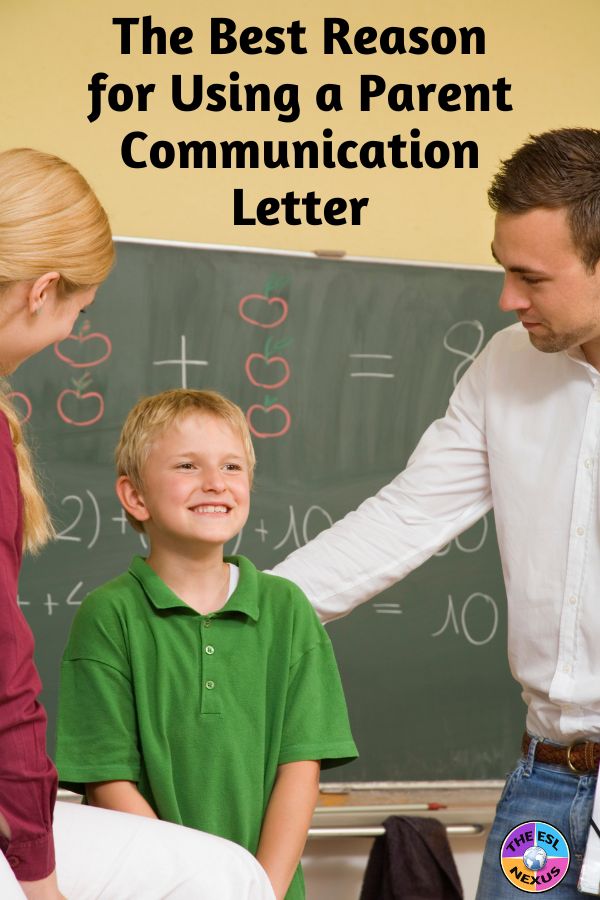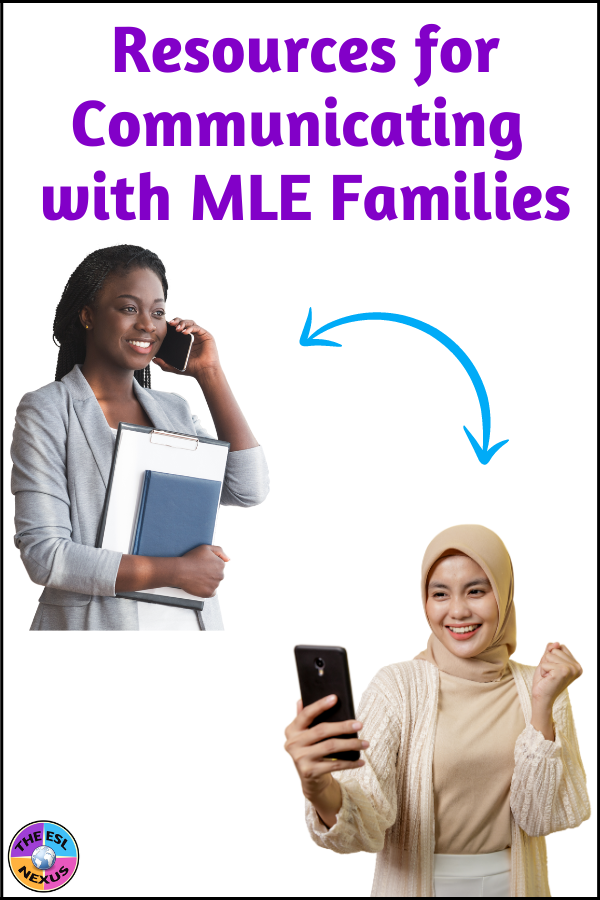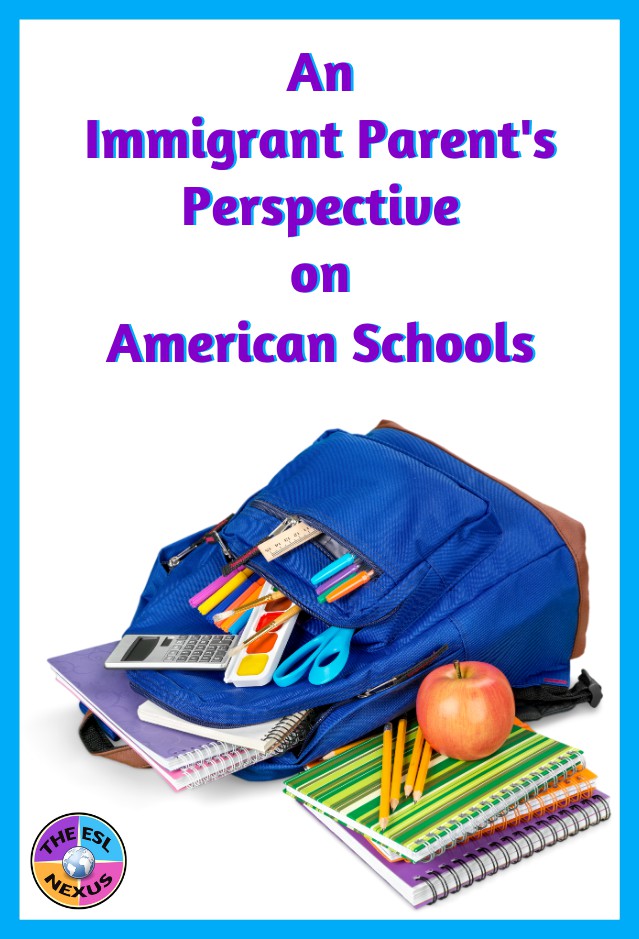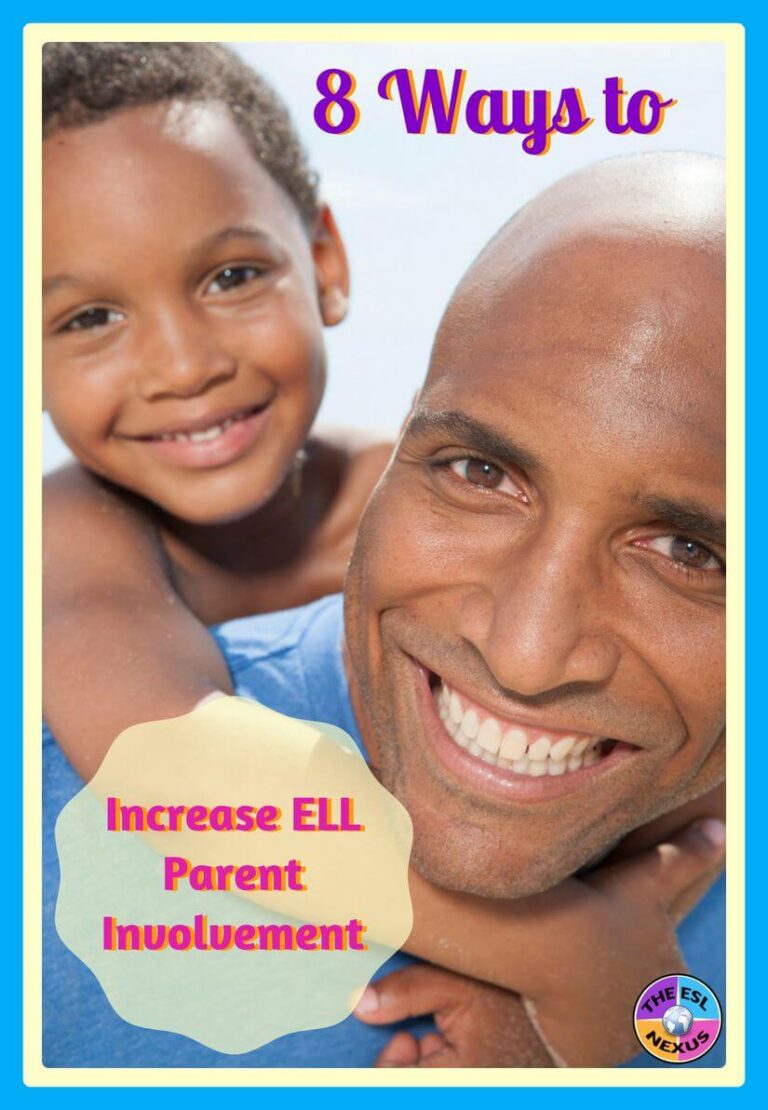Parent communication is crucial for teachers working with English Language Learners. But for the first couple of years that I taught at my K-8 school, almost none of the parents of my English Learners came to my classroom during our Open Houses at the beginning of the year or for quarterly parent conferences when report cards came out. It was very discouraging to sit in my room for 2 hours and have no one visit. In this blog post, I’m going to share the easy-to-implement things I did to change that.
 |
| Sending letters home to ELL families increases their participation in school functions; source: The ESL Nexus |
The Importance of a Parent Communication Letter
I realized I had to do something if I wanted my students’ families to come to the school. So I started reaching out to them. I made phone calls home and I got permission from my principal to send letters home.
What a difference that made! Suddenly, I had a steady flow of parents and caregivers visit me. I was able to explain what their kids would be learning, show them the textbooks we’d be using, how I’d be grading the students’ work, show them the weekly progress form I’d be using to update them on how their children were doing in my class, and tell them how to access my class website where they could find out what the homework assignments were and other important info.
From then on, I always sent home a letter when there was an important school function. I’d learned that making that extra effort was necessary because many of my ELL families were not used to being much involved in their children’s education. They came from cultures that highly respected teachers, expected teachers to know and do what was best for students, and therefore took a hands-off approach to their kids’ education.
Far from being uninterested or not caring about their children’s education, as many teachers in my building thought because most Multilingual Language Learners’ families didn’t show up for Open Houses or optional report card conferences, they just needed to understand why it was important and helpful for them to participate in school activities. Since that wasn’t something they were accustomed to doing, when I reached out to them and extended a personal invitation, that made them feel comfortable coming to school functions.
Parent Communication Tips for Open Houses and Conferences
When they came to my room, I always told them that we were partners in teaching their kids. I explained that I’d be in touch with them regularly and together we would help their kids achieve success in school. So I made a point of letting them know when their kids had done something well, and didn’t contact them only when there was a problem.
And don’t let being unable to speak your students’ languages stop you. Many of my students’ families found it hard to communicate in English, but they usually brought someone who was more fluent in English to help us communicate with each other. Once, when a Turkish mother who didn’t know any English came to see me, we used Google Translate to communicate; it made mistakes but we laughed and managed to get our points across in spite of that. Your ELL families, perhaps more than others because they know it’s challenging, will be grateful that you make the effort to keep them informed about their children.
When to Send a Parent Communication Letter Home
Besides open houses and report card conferences, here are some other times it’s helpful to contact MLL families directly and not rely on an impersonal announcement sent home to all students:
* Field trips, especially if you’re looking for chaperones
* Evening activities, such as game nights or holiday fairs
* International or multicultural nights, especially if food from various cultures is included
* School plays
* Concerts
* Book fairs, if families are allowed to go to them
* Special end of the year activities such as field days, especially if chaperones are needed
Another thing to keep in mind is that school activities are often in the evening, when many adults are working. Eventually, my school started adding afternoon conference times but that still didn’t accommodate everyone’s schedule. So one year, when I really wanted to talk to a mother who was unable to come to the school during the regularly-scheduled time, I got permission to do a virtual conference via Skype. This was long before Zoom was a thing and no one else in my school had ever done such a conference. But it worked great. So thinking outside the box and figuring out workarounds to get your students’ families involved is another thing I encourage you to do.
Results of Using a Parent Communication Form for Teachers
Making that extra effort to get my MLL families to come to the school was well worth it. To save you the time of having to write up your own letter, I’ve recreated the one I sent home. It’s customizable, meaning you can add your own info to it, but it’s not completely editable. There are both print and digital versions.
When you buy this resource, you’ll also get versions of the parent contact information sheet I used at open houses and the parent communication log I used for report card conferences – because eventually I had lots of families attend and I needed to keep track of who was coming and when they were coming.
Being able to collaborate with my ELL students’ families to help their children be successful in my class was the best reason for using a parent communication letter and other forms. I hope these tips and parent communication templates for teachers help increase attendance by your students’ families at school functions, too.




